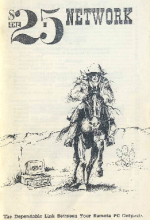MykeLawson
Experienced Member
- Joined
- Mar 21, 2014
- Messages
- 396
I'm taking a break from finishing my suite of RAMdisk applications since I purchased an old IBM PS/2 8560. It now has a dual RS-232 card and I'm hooking each port to a serial port on each of my CP/M machines (one with STB bus and the other is S-100). The PS/2 will be my 'file server' (PS/2 Com Ports vs. BASIC - https://forum.vcfed.org/index.php?threads/ps-2-com-ports-vs-basic.1244188/#post-1330895). Since I haven't a clue about 80286 assembly code for use on an old PS/2, I am writing the file server application in BASIC. I have four routines planned; get the date, get the time, get a disk directory, delete a file, save a file, and load a file. So far, the first four are working great when I use a dumb terminal as a pseudo-CP/M machine.
So now it will be time to shift gears back to the CP/M machines to write the assembly code to communicate with the fileserver instead of the dumb terminals I use now. Given the commands are just ASCII characters I send to the file server, if should be fairly easy. Like the command to get the date is just '<<DTE'. Then the server sends back ten ASCII characters that I print to the screen. Same for the time except it's just eight characters. The directory command just goes over, the file server creates a directory as a text file, and ships the ASCII characters back over and they are displayed. You get the idea.....
Anyway, if anyone is interested, I attached the BASIC code I have so far.... And I'll post the suite of CP/M client tools as I write them.
So now it will be time to shift gears back to the CP/M machines to write the assembly code to communicate with the fileserver instead of the dumb terminals I use now. Given the commands are just ASCII characters I send to the file server, if should be fairly easy. Like the command to get the date is just '<<DTE'. Then the server sends back ten ASCII characters that I print to the screen. Same for the time except it's just eight characters. The directory command just goes over, the file server creates a directory as a text file, and ships the ASCII characters back over and they are displayed. You get the idea.....
Anyway, if anyone is interested, I attached the BASIC code I have so far.... And I'll post the suite of CP/M client tools as I write them.

